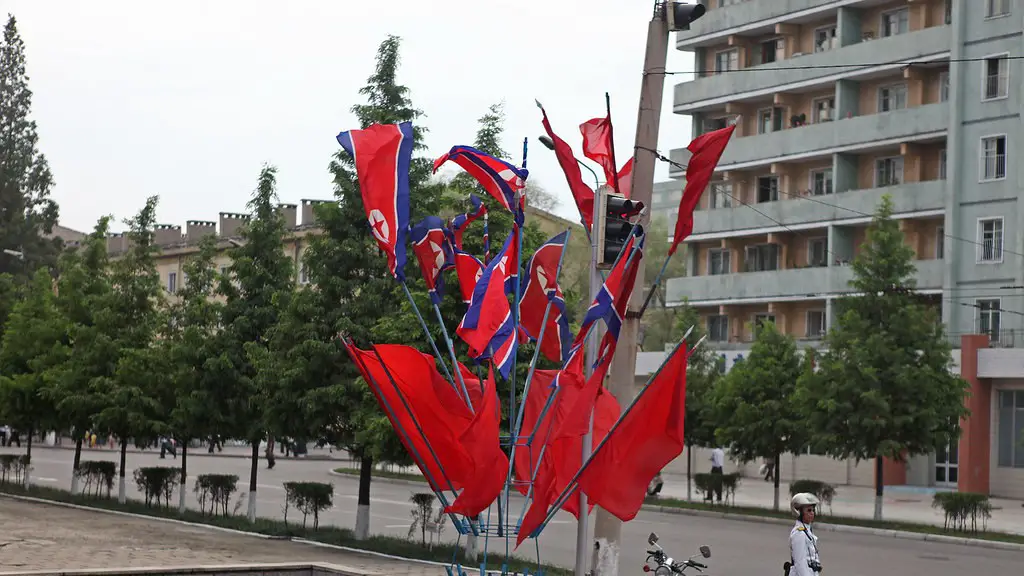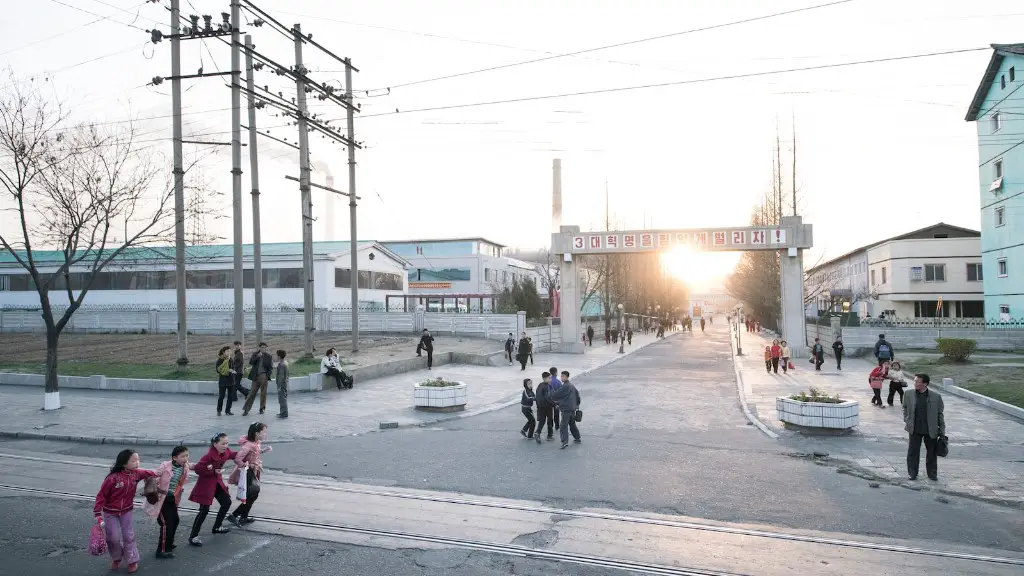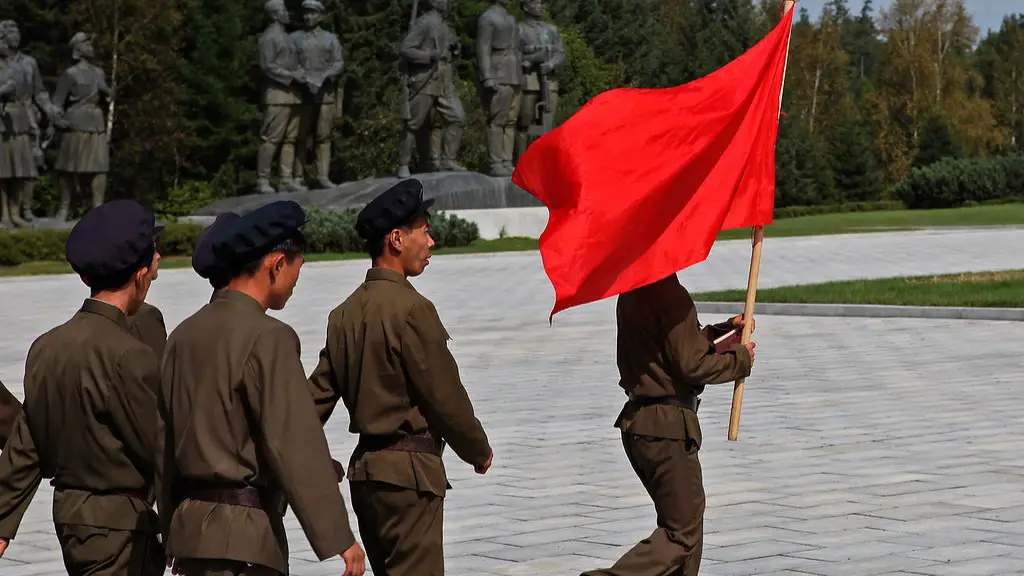Geographical Location of South and North Korea
South and North Korea share a border about 250 miles long, known as the Demilitarized Zone (DMZ). The two countries are divided by the 38th parallel, with South Korea to the south and North Korea to the north. South Korea lies on the Korean Peninsula, which is bordered by both China and Japan. Located on the east coast of the peninsula, South Korea has a population of roughly 51 million people. On the other hand, North Korea is located further inland, with a population of 25 million.
Due to the geographical location of South and North Korea, they naturally have different cultures. The South has adopted a variety of influences from its neighbors, such as Japanese cuisine and festivals, while North Korea has remained somewhat isolated due to its closed-off policy. South Korea is one of the most developed countries in the world, with a highly developed infrastructure and a wide range of tourist attractions. North Korea, on the other hand, remains a secretive and isolated nation.
Retreat of Troops From South Korea
In 1953, the Korean War ended with a ceasefire after three years of conflict. As part of the ceasefire agreed upon in the Armistice Agreement, troops from both North and South Korea withdrew from the border. Since then, the 38th parallel has become the official boundary between North and South.
However, since the end of the Korean War, tensions between the two countries have remained high. Despite the presence of numerous United Nations forces along the border, both sides still maintain a large presence of military units along the DMZ. Although both South and North Korea have agreed to reduce the presence of troops along the border, they still remain at odds in many matters.
Conflict and Tensions Between South and North Korea
The decades long conflict and tensions between South and North Korea has created a volatile situation in the region. In 2018, the then South Korean President Moon Jae-in and North Korean leader Kim Jong-un held a historic summit in North Korea. The two leaders agreed to work towards peace and the reunification of the Korean peninsula.
In 2019, North Korean Leader Kim Jong-un and US President Donald Trump held their second summit in Vietnam in an effort to come to an agreement on denuclearization. However, the summit ended abruptly with no agreement being reached. Since then, North and South Korea have resumed their hostile stance against each other, leading to increased tensions in the region.
Effects of Conflict and Tensions
The decades long conflict and tensions between South and North Korea has had far-reaching consequences. It has prevented the two nations from developing and strengthening trade ties with their neighbors, which has in turn led to a decrease in economic growth. Additionally, it has led to the emergence of numerous human rights issues, due to the authoritarian rule in North Korea.
Meanwhile, the conflict and tensions have made it difficult for South and North Koreans to interact with each other, even though they share a common language and cultural heritage. South Koreans are forbidden from traveling to the North, while North Koreans are not allowed to travel to the South. This has made it impossible for both sides to build relationships and find common ground.
South Korea’s Reliance on the US
The US and South Korea have maintained a close alliance since the Korean War, providing military aid and support for the South. This alliance is a major factor in South Korea’s security, with US forces continuing to be stationed on South Korean soil.
However, this reliance on the US has caused some tension between the two nations. South Korea has criticized the US’s heavy-handed approach towards North Korea and has sought to create a more independent foreign policy. Nevertheless, the US and South Korea continue to maintain a close relationship, with US forces playing a vital role in South Korea’s security.
North Korea’s Nuclear Weapons Program
North Korea’s secretive and aggressive nuclear weapons program has caused much concern and tension in the region. Since the mid-1990s, North Korea has conducted multiple nuclear tests and has threatened to use the weapons against its neighbors. In 2018, North Korean leader Kim Jong-un declared that North Korea had “completed” its nuclear weapons program, raising further concerns.
North Korea’s nuclear program has been the source of much tension between the US and North Korea. The US has sought to reign in North Korea’s nuclear ambitions, while North Korea has sought to use them as leverage in negotiations with the US and its allies. Nevertheless, the two countries have made some progress in recent years, with the US and North Korea signing a historic peace agreement in 2018.
The Future of South and North Korea
The future of South and North Korea remains uncertain. Although there have been some recent moves towards reconciliation and peace, tensions remain high and both sides remain distrustful of each other. However, with the emergence of new leaders in North and South Korea and the ongoing diplomatic efforts between them, a peaceful solution to the Korean conflict may be within reach.
The Impact of the Korean Conflict on the International Stage
The conflict between South and North Korea has had a significant impact on the international stage. It has caused numerous countries to take sides, leading to a deepening of the conflict. It has also served as a major source of tension between the US, its allies, and North Korea.
The conflict has also provided China with an opportunity to expand its influence in the region. China has used the conflict between South and North Korea to become an important mediator between the two sides. Additionally, China has sought to use its influence to push for a peace agreement between the two countries.
The Role of the UN in the Korean Conflict
The United Nations (UN) has played an important role in trying to de-escalate the conflict between South and North Korea. The UN has sent numerous forces to help maintain security along the border and has sought to promote dialogue between the two sides. Additionally, the UN has drafted and implemented numerous sanctions against North Korea in order to prevent the country from advancing its nuclear weapons program.
The UN has also sought to use its resources to help bridge the divide between the two countries. Through its various programs, the UN has sought to bring the people of South and North Korea closer together and foster dialogue between them. Despite the efforts of the UN, however, tensions remain high in the region and further efforts are needed to promote peace.
Conclusion of the South and North Korea Conflict
The conflict between South and North Korea remains unresolved, despite decades of negotiations and diplomatic efforts by the international community. Although there have been some positive steps taken in recent years towards a peaceful resolution, there still remains a great deal of distrust between the two sides.
It is clear that the only way for South and North Korea to reach a peaceful resolution is through dialogue and compromise. Until both sides are willing to compromise, the conflict will remain unresolved and tensions in the Korean peninsula will remain high.


